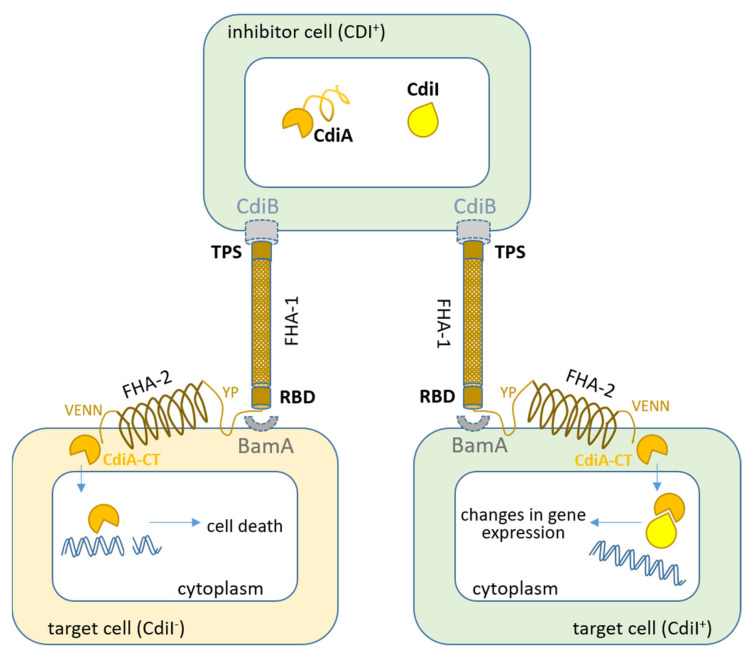Figure 2.
The contact-dependent growth inhibition (CDI) model of toxin delivery into a neighboring cell. The C-terminal effector domain (CdiA-CT) (toxin) is delivered to the target cell via specific membrane receptors (left part of the figure). In the cytoplasm, CdiA-CT degrades the nucleic acids (DNA or RNA) of the target cell leading to growth arrest and cell death. When entering a cell that produces CDI proteins (right part of the picture), CdiA-CT is inactivated by binding to the corresponding immune proteins CdiI. It was assumed that the complex of CdiA-CT/CdiI with nucleic acids and/or target cell proteins induces changes in gene expression leading to phenotypic changes [13,35].

